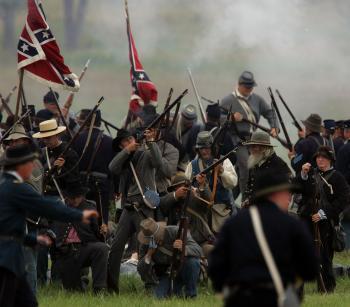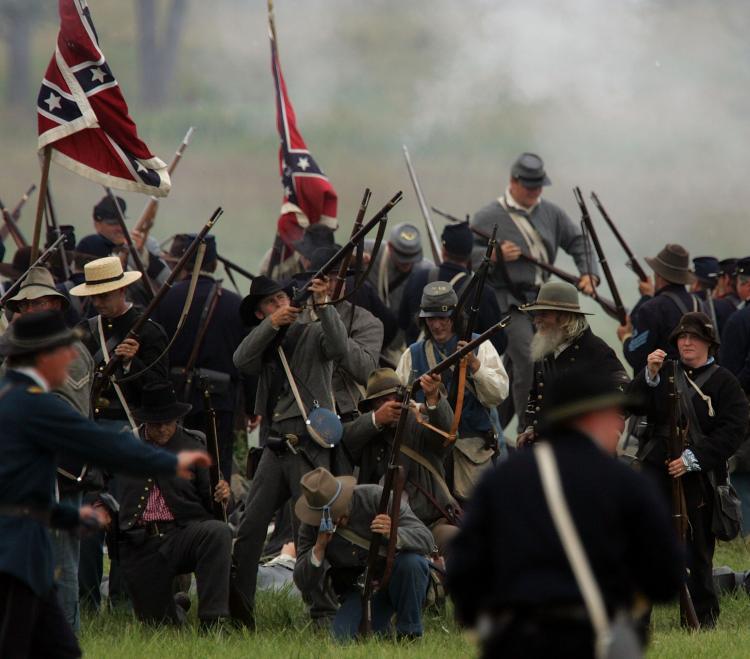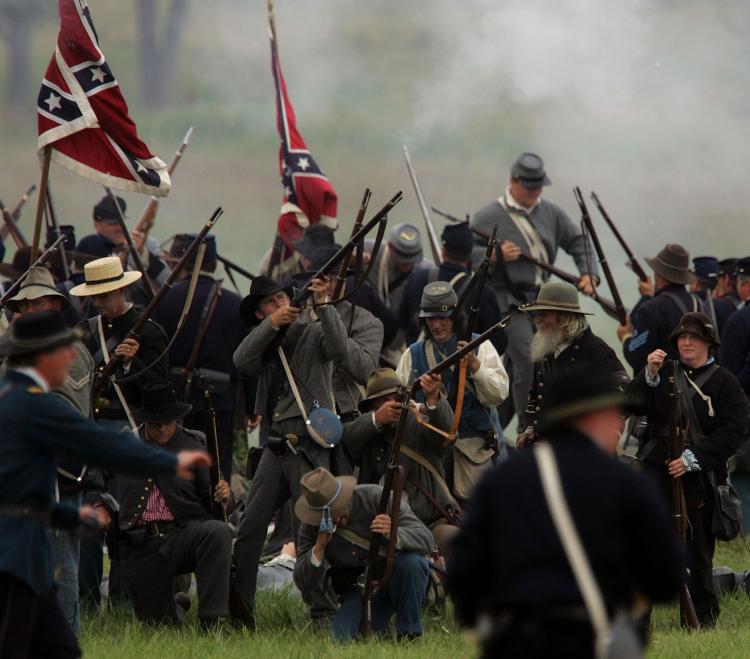Gettysburg is considered by many a holy ground of American heritage. In preparation for next month’s anniversary of the Battle of Gettysburg, July 1-3, workers involved in the Schmucker Hall Renovation Project are scrambling to get things ready for the yearly event.
Gettysburg was the bloodiest battle in U.S. history, with more casualties than ever before or since. In remembrance of those who fought in the Civil War, the National Military Park in Gettysburg was established in 1895. Over 50,000 troops died over the first three days of July. President Abraham Lincoln said they died so “that this nation, under God, shall have a new birth of freedom—and that government of the people, by the people, for the people, shall not perish from the earth.”
Gettysburg, the small town, embraces treasures of American history like the Schmucker Hall that served as a hospital during the war or the newly built 22,000 square-foot National Military Park Museum and Visitor Center which stores rare antiques from the Civil War. Over time, Gettysburg learned how to balance the authenticity of historical buildings with the restoration and renewal of valuable historical sites.
Various individual rehabilitation plans have been carried out by private owners of the buildings, national park societies, and federal government support. The city of Gettysburg is constantly reinventing itself, to freshen the sites for visitors and locals, which will remain just as welcoming but with a new coat of paint. “ It’s an ongoing process,” said Leslie Grandstaff from the Tillie Pierce House.
The Schmucker Hall Renovation Project is one of the main focuses of the Gettysburg restoration phase. The hall served as a hospital during the war. Hundreds of soldiers sought aid there daily, and it is the largest building that has been preserved since the end of the war.
The project started in 2006 and should be complete in time for Gettysburg Battle’s 150th anniversary in 2013, when the building will reopen as a new museum. Three levels will feature a scene of how the town looked like on the first day of the battle, a level depicting the role of the building as a hospital in 1863 and one level dedicated to the role of religion during the brutal war.
Locals are patient to see the completed project, which “gained wide support,” said Emried Cole, executive director of Voices of History, an organization which sponsors the Schmucker Hall Project. “It’s a worthy project,” he added.
Small museums are held inside houses of Gettysburg locals that experienced the Civil War first hand, like the Shriver House Museum, the Jennie Wade House, the Tillie Pierce House, and the David Will’s House. Each one is a shrine for a unique story from the past, Jennie for example, fiancée of Cpl. Shelly only citizen from Gettysburg who died in the Civil War, David Will’s House was dedicated to Abraham Lincoln’s Gettysburg Address. All of these sites undergo meticulous yearly rehabilitation to keep these historical sites looking the same as they did during the war.
Gettysburg citizens put on a yearly show at one of the museums dressed in authentic mid-19th century clothing while re-enacting scenes from the time of the Gettysburg Battle. The Shriver House Museum fills with men dressed as Confederate soldiers, women, and children who act out how the Shriver family lived.
Gettysburg College and Gettysburg Hotel donated $10,000 for work that will be done in the downtown area through joint efforts with the Main Street Gettysburg organization. The nonprofit organization aims at historic preservation and financial support of the town.
The federal government, earlier this year, allocated almost $80,000 for the rehabilitation of the Klingel Farmhouse at the National Military Park.
Over 4 million tourists visit Gettysburg every year to get a sobering taste of American history. Gettysburg, patched up or not, will remain the renowned town where a great moment in history lies buried with those who gave their lives.
Gettysburg was the bloodiest battle in U.S. history, with more casualties than ever before or since. In remembrance of those who fought in the Civil War, the National Military Park in Gettysburg was established in 1895. Over 50,000 troops died over the first three days of July. President Abraham Lincoln said they died so “that this nation, under God, shall have a new birth of freedom—and that government of the people, by the people, for the people, shall not perish from the earth.”
Gettysburg, the small town, embraces treasures of American history like the Schmucker Hall that served as a hospital during the war or the newly built 22,000 square-foot National Military Park Museum and Visitor Center which stores rare antiques from the Civil War. Over time, Gettysburg learned how to balance the authenticity of historical buildings with the restoration and renewal of valuable historical sites.
Various individual rehabilitation plans have been carried out by private owners of the buildings, national park societies, and federal government support. The city of Gettysburg is constantly reinventing itself, to freshen the sites for visitors and locals, which will remain just as welcoming but with a new coat of paint. “ It’s an ongoing process,” said Leslie Grandstaff from the Tillie Pierce House.
The Schmucker Hall Renovation Project is one of the main focuses of the Gettysburg restoration phase. The hall served as a hospital during the war. Hundreds of soldiers sought aid there daily, and it is the largest building that has been preserved since the end of the war.
The project started in 2006 and should be complete in time for Gettysburg Battle’s 150th anniversary in 2013, when the building will reopen as a new museum. Three levels will feature a scene of how the town looked like on the first day of the battle, a level depicting the role of the building as a hospital in 1863 and one level dedicated to the role of religion during the brutal war.
Locals are patient to see the completed project, which “gained wide support,” said Emried Cole, executive director of Voices of History, an organization which sponsors the Schmucker Hall Project. “It’s a worthy project,” he added.
Small museums are held inside houses of Gettysburg locals that experienced the Civil War first hand, like the Shriver House Museum, the Jennie Wade House, the Tillie Pierce House, and the David Will’s House. Each one is a shrine for a unique story from the past, Jennie for example, fiancée of Cpl. Shelly only citizen from Gettysburg who died in the Civil War, David Will’s House was dedicated to Abraham Lincoln’s Gettysburg Address. All of these sites undergo meticulous yearly rehabilitation to keep these historical sites looking the same as they did during the war.
Gettysburg citizens put on a yearly show at one of the museums dressed in authentic mid-19th century clothing while re-enacting scenes from the time of the Gettysburg Battle. The Shriver House Museum fills with men dressed as Confederate soldiers, women, and children who act out how the Shriver family lived.
Gettysburg College and Gettysburg Hotel donated $10,000 for work that will be done in the downtown area through joint efforts with the Main Street Gettysburg organization. The nonprofit organization aims at historic preservation and financial support of the town.
The federal government, earlier this year, allocated almost $80,000 for the rehabilitation of the Klingel Farmhouse at the National Military Park.
Over 4 million tourists visit Gettysburg every year to get a sobering taste of American history. Gettysburg, patched up or not, will remain the renowned town where a great moment in history lies buried with those who gave their lives.







